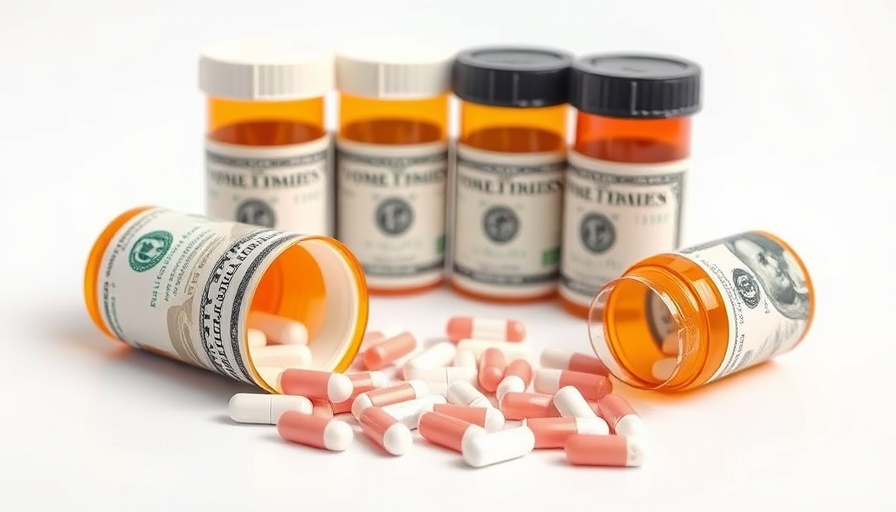
Understanding Trump's Executive Order on Drug Pricing
In a significant policy shift, President Donald J. Trump signed an executive order on May 12, 2025, aimed at reducing the exorbitant prices that Americans pay for prescription medications. Dubbed the Most-Favored-Nation (MFN) pricing model, this order mandates that prices for brand-name drugs in the U.S. must align with the lowest prices available in economically similar countries. This initiative comes amid growing frustration over the disparity in medication costs, which often burden American patients significantly more than those in countries like Germany and France.
Why Price Targets Could Transform Healthcare
This new policy could save American taxpayers an estimated $88 billion over the next seven years, a remarkable figure that reflects just how high prices have been set. The MFN approach specifically targets drugs without generic alternatives, where pharmaceutical companies enjoy monopolistic pricing. This tactic aims to curb what Trump labeled as "foreign freeriding," whereby U.S. consumers subsidize the lower prices offered in countries with government-influenced healthcare systems.
How the MFN Model Works in Practice
Under the MFN model, pharmaceutical companies must match the lowest prices offered in any Organisation for Economic Co-operation and Development (OECD) country, provided that country has a GDP per capita of at least 60% that of the U.S. Healthcare advocates argue that this requirement is crucial for ensuring fair pricing. It’s essential to recognize that this policy will initially apply to Medicare Part B drugs, with plans for Medicaid to follow suit, emphasizing a strategic approach to healthcare reform.
Big Pharma's Reaction: Innovation vs. Regulation
Predictably, Big Pharma has voiced its objections, claiming that such measures could stifle innovation and lead to reduced access to new treatments. The Pharmaceutical Research and Manufacturers of America (PhRMA) has argued that capping prices might deter investment in research and development. However, supporters of the executive order argue that the high profits made by pharmaceutical companies indicate that the need for fair pricing and accessibility often takes precedence over immediate business interests.
Local Impact: How Massachusetts Residents May Benefit
For residents of Massachusetts, a state known for high living costs and healthcare expenses, these changes could provide tangible relief. With many locals relying on medications that might cost significantly less in other countries, aligning U.S. prices with global standards means that families may find it easier to access the medications they need for their health and well-being. Furthermore, the policy allows patients to buy direct from manufacturers at the lowest available price, further cutting out unnecessary costs.
The Future of Healthcare Pricing: A Step Forward?
If implemented effectively, the MFN pricing model could be the start of a greater transformation in the U.S. healthcare landscape. The ongoing debate draws attention to the fundamental question of how a country balances business interests with public health needs. Advocates for reform point to the MFN order as a critical step in ensuring that Americans are no longer subjected to financial strain simply because they need medication. As discussions continue, the true test will lie in how effectively these rules are enforced and how pharmaceutical companies adapt to these new expectations.
Your Voice Matters: Engaging with Healthcare Reforms
As this executive order rolls out, it's crucial for everyone—especially Massachusetts residents—to remain informed and engaged. The outcomes of these policies might shape the way we think about healthcare access and affordability in the coming years. Consider discussing with healthcare providers the impact of these changes or advocating for further reforms to support fair pricing and accessible medication for all.
 Add Row
Add Row  Add
Add 




Write A Comment